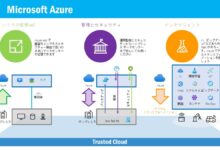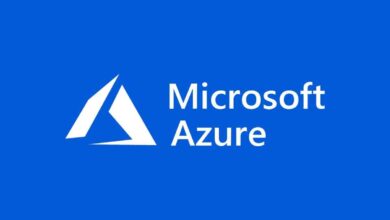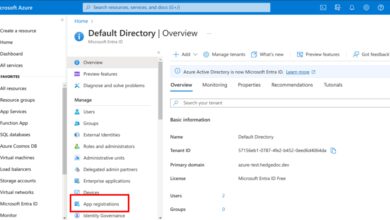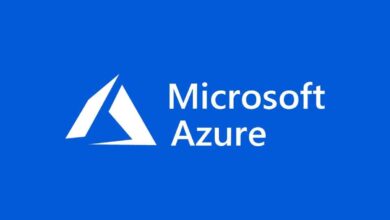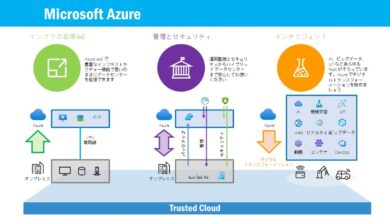Azure Cost Calculator: 7 Powerful Tips to Master Cloud Budgeting
Managing cloud costs can feel like navigating a maze—especially when you’re dealing with a platform as vast as Microsoft Azure. That’s where the Azure Cost Calculator becomes your ultimate guide. This powerful tool helps you estimate, plan, and optimize your cloud spending with precision and confidence.
What Is the Azure Cost Calculator and Why It Matters

The Azure Cost Calculator is an essential online tool provided by Microsoft to help businesses, developers, and IT decision-makers estimate the cost of using Azure cloud services before deployment. Unlike generic pricing estimators, this tool offers a granular, service-by-service breakdown that reflects real-world usage scenarios.
Understanding the Core Purpose of the Tool
The primary goal of the Azure Cost Calculator is to eliminate guesswork from cloud budgeting. It allows users to simulate different configurations of virtual machines, storage, networking, databases, and other Azure resources. By inputting specific parameters such as region, instance type, data transfer volume, and usage duration, users can generate accurate cost projections.
- Enables pre-deployment financial planning
- Supports comparison between different service tiers
- Helps identify potential cost overruns before they occur
How It Differs from the Total Cost of Ownership (TCO) Calculator
While both tools are designed to assist with financial planning in the cloud, the Azure TCO Calculator focuses on comparing on-premises infrastructure costs with moving to Azure. In contrast, the Azure Cost Calculator zeroes in on actual Azure service pricing based on selected configurations.
“The Azure Cost Calculator doesn’t just estimate—it empowers informed decision-making through transparency.” — Microsoft Azure Documentation
Step-by-Step Guide to Using the Azure Cost Calculator
Navigating the Azure Cost Calculator is straightforward once you understand its interface and logic. Whether you’re a beginner or an experienced cloud architect, following a structured approach ensures you get the most accurate estimates.
Accessing the Tool and Setting Up Your First Estimate
To begin, visit the official Azure pricing calculator page. No login is required to start building your estimate, though saving or exporting requires a Microsoft account.
- Go to azure.microsoft.com/pricing/calculator
- Select services you plan to use (e.g., Virtual Machines, Blob Storage)
- Add them to your estimate workspace
Configuring Services Accurately for Realistic Estimates
Each service added to your estimate opens a configuration panel where you can fine-tune settings. For example, when adding a Virtual Machine:
- Choose the region (pricing varies by location)
- Select VM size (e.g., B2s, D4s_v3)
- Pick the OS (Windows, Linux)
- Set usage hours per month (default is 730, representing 24/7 operation)
- Include optional features like backup or monitoring
Accuracy depends heavily on how closely your inputs mirror actual expected usage. Overestimating or underestimating usage patterns can lead to misleading budget forecasts.
Key Features That Make the Azure Cost Calculator Powerful
The Azure Cost Calculator isn’t just a simple price lookup tool—it’s packed with intelligent features that enhance usability, accuracy, and collaboration.
Real-Time Cost Updates as You Modify Configurations
One of the most valuable aspects of the Azure Cost Calculator is its dynamic pricing engine. As soon as you change a setting—like switching from pay-as-you-go to reserved instances—the total monthly cost updates instantly.
- Immediate feedback helps in rapid scenario testing
- Encourages exploration of cost-saving alternatives
- Reduces time spent on manual recalculations
Support for Multiple Currencies and Billing Models
The tool supports over 170 countries and multiple currencies, making it ideal for global organizations. You can view estimates in USD, EUR, GBP, JPY, and many others.
- Toggle between monthly and annual billing views
- Compare pay-as-you-go vs. reserved instances (1-year or 3-year terms)
- Factor in hybrid benefits like Azure Hybrid Benefit for Windows Server
Export, Share, and Collaborate on Estimates
Once your estimate is complete, you can export it as a CSV or PDF file for sharing with stakeholders. You can also generate a shareable link that allows team members to view or edit the same estimate.
- Facilitates cross-departmental alignment (IT, finance, management)
- Supports audit trails and documentation for procurement
- Integrates well with internal approval workflows
Common Mistakes Users Make with the Azure Cost Calculator
Despite its user-friendly design, many users fall into traps that compromise the accuracy of their cost projections. Recognizing these pitfalls early can save significant time and money.
Ignoring Data Transfer and Egress Fees
One of the most overlooked cost components in Azure is data egress—the fee charged when data leaves the Azure network. While inbound data is free, outbound traffic (especially to regions outside Azure) incurs charges.
- Egress costs can spike if not accounted for in high-bandwidth applications
- CDN usage can reduce egress fees but adds another layer of cost
- Always check the bandwidth pricing page for current rates
Overlooking Hidden Costs Like Snapshots and Backups
Features like automated backups, disk snapshots, and monitoring tools are often enabled by default but come at an additional cost. These may not be included automatically in the Azure Cost Calculator unless explicitly added.
- Backup storage is billed separately from VM or database costs
- Snapshots consume storage space and incur charges over time
- Log Analytics and Azure Monitor have tiered pricing based on data ingestion
Using Default Settings Without Customization
The calculator often defaults to 730 hours per month (24/7 usage), which may not reflect real-world scenarios. If your application runs only during business hours or on a part-time schedule, leaving this unchanged will overestimate costs.
- Adjust usage hours to match actual operational needs
- Use shutdown schedules for dev/test environments
- Consider auto-scaling to reduce idle resource costs
How to Optimize Costs Using the Azure Cost Calculator
Beyond estimation, the Azure Cost Calculator serves as a strategic tool for cost optimization. By modeling different scenarios, you can identify the most economical architecture for your workload.
Leveraging Reserved Instances for Long-Term Savings
Reserved Virtual Machine Instances allow you to commit to 1-year or 3-year terms in exchange for significant discounts—up to 72% compared to pay-as-you-go pricing.
- Use the calculator to compare pay-as-you-go vs. reserved pricing
- Model different reservation durations to find the best ROI
- Apply reservations to qualifying VMs, SQL databases, and Cosmos DB
When using the Azure Cost Calculator, simply toggle the billing model to “Reserved” and adjust the term length to see instant savings.
Choosing the Right Region for Cost and Performance
Pricing varies significantly across Azure regions. For example, services in the US East region are often cheaper than in Northern Europe or Japan. However, performance, compliance, and data residency requirements must also be considered.
- Compare prices across multiple regions within the calculator
- Balancing latency and cost is crucial for global applications
- Some regions offer lower egress fees or special pricing for startups
Right-Sizing Resources Before Deployment
One of the biggest sources of waste in cloud environments is over-provisioning. The Azure Cost Calculator helps you experiment with smaller instance sizes or lower-tier storage options to find the optimal balance between performance and cost.
- Start with baseline configurations and scale up only if needed
- Use burstable VMs (like B-series) for variable workloads
- Compare SSD vs. HDD storage costs for non-critical applications
Integrating the Azure Cost Calculator with Other Azure Tools
The true power of the Azure Cost Calculator emerges when it’s used in conjunction with other Azure management and monitoring tools. This integration creates a closed-loop system for cost governance.
Linking with Azure Advisor for Continuous Optimization
Azure Advisor is a personalized cloud consultant that analyzes your deployments and provides recommendations for improving cost efficiency, performance, security, and reliability.
- Advisor identifies underutilized resources that could be downsized
- It suggests reserved instance purchases based on usage patterns
- Recommendations can be validated using the Azure Cost Calculator
For example, if Advisor recommends switching to a reserved instance, you can plug that configuration into the calculator to quantify the savings.
Using Azure Cost Management + Billing for Post-Deployment Tracking
While the Azure Cost Calculator is used pre-deployment, Azure Cost Management + Billing helps you monitor actual spending after launch. Together, they form a complete cost lifecycle management system.
- Compare forecasted costs (from the calculator) with actual spend
- Set budgets and alerts to prevent overspending
- Break down costs by resource group, department, or project
Connecting with Azure Architecture Center for Best Practices
The Azure Architecture Center provides reference architectures and design patterns for common workloads like web apps, microservices, and data lakes. These blueprints can be reverse-engineered into the Azure Cost Calculator to estimate their financial impact.
- Estimate the cost of implementing a secure hybrid network
- Model the expense of a serverless event-driven architecture
- Compare monolithic vs. containerized deployment costs
Advanced Strategies for Enterprise Users of the Azure Cost Calculator
For large organizations with complex cloud footprints, the Azure Cost Calculator can be leveraged at scale to support financial governance, chargeback models, and strategic planning.
Building Standardized Cost Templates for Teams
Enterprises can create standardized cost estimation templates for common deployment types—such as development environments, production web apps, or data analytics pipelines.
- Ensure consistency across departments
- Reduce errors in budget requests
- Speed up approval processes with pre-validated configurations
These templates can be saved and shared via links, ensuring all teams use the same baseline assumptions.
Forecasting Multi-Year Cloud Spend for C-Level Reporting
Using the calculator, financial teams can project cloud expenditures over 12, 24, or 36 months, factoring in growth, reserved instances, and anticipated workload migrations.
- Support CFOs and CIOs in strategic budgeting
- Demonstrate ROI of cloud migration initiatives
- Model the impact of scaling up AI, IoT, or machine learning workloads
Aligning with FinOps Practices for Cloud Financial Management
The FinOps (Financial Operations) framework emphasizes accountability and agility in cloud spending. The Azure Cost Calculator plays a key role in the “Inform” phase of FinOps by providing transparent, real-time cost data.
- Empower engineering teams with cost visibility
- Foster collaboration between finance and IT
- Enable data-driven decisions instead of budget guesswork
Alternatives and Complementary Tools to the Azure Cost Calculator
While the Azure Cost Calculator is the official and most accurate tool for estimating Azure costs, several third-party and complementary tools can enhance your financial planning.
Third-Party Cloud Cost Management Platforms
Tools like CloudHealth by VMware, Azure-native ParkMyCloud, and Apptio offer advanced cost analytics, multi-cloud support, and automation capabilities beyond what the Azure Cost Calculator provides.
- Provide continuous cost monitoring and anomaly detection
- Support automated resource scheduling (e.g., turning off dev VMs at night)
- Offer deeper integration with enterprise financial systems
Using Excel or Custom Scripts for Large-Scale Modeling
Some organizations export Azure pricing data and build custom models in Excel or Python scripts for highly specialized scenarios.
- Use the Azure Retail Prices API to pull real-time pricing data
- Build scenario-based models with conditional logic
- Integrate with internal ERP or project management systems
However, this approach requires maintenance and may lag behind real-time pricing changes.
When to Use the TCO Calculator vs. the Azure Cost Calculator
As mentioned earlier, the TCO Calculator is ideal when you’re still deciding whether to move to the cloud. It compares on-premises hardware, software, power, and labor costs against Azure’s cloud model.
- Use TCO Calculator for migration justification
- Switch to Azure Cost Calculator once the decision to migrate is made
- Combine both for a comprehensive financial narrative
What is the Azure Cost Calculator?
The Azure Cost Calculator is a free online tool from Microsoft that allows users to estimate the monthly cost of running various Azure cloud services based on customizable configurations such as region, instance type, storage, and data transfer.
Is the Azure Cost Calculator accurate?
Yes, the Azure Cost Calculator provides highly accurate estimates based on current Azure pricing. However, it’s important to configure all parameters correctly and account for often-overlooked costs like data egress, backups, and monitoring to ensure precision.
Can I save my estimates in the Azure Cost Calculator?
Yes, you can save your estimates by signing in with a Microsoft account. Once saved, you can name, organize, and revisit your estimates later. You can also export them as CSV or PDF files for sharing.
Does the Azure Cost Calculator include taxes?
No, the Azure Cost Calculator does not include taxes, shipping fees, or other surcharges. These are calculated separately during actual billing based on your region and tax status.
How can I reduce my Azure costs using the calculator?
You can use the Azure Cost Calculator to compare different service tiers, test reserved instance savings, choose cost-effective regions, and right-size your resources before deployment, helping you optimize spending from day one.
Mastering the Azure Cost Calculator is not just about avoiding overspending—it’s about making smarter, data-driven decisions that align technology with business goals. From estimating simple VM deployments to modeling enterprise-wide cloud migrations, this tool provides the clarity and control needed to succeed in the cloud. By avoiding common mistakes, leveraging advanced features, and integrating with other Azure services, you can turn cost estimation into a strategic advantage. Whether you’re a developer, architect, or financial planner, the Azure Cost Calculator is your first step toward responsible and efficient cloud adoption.
Recommended for you 👇
Further Reading:




